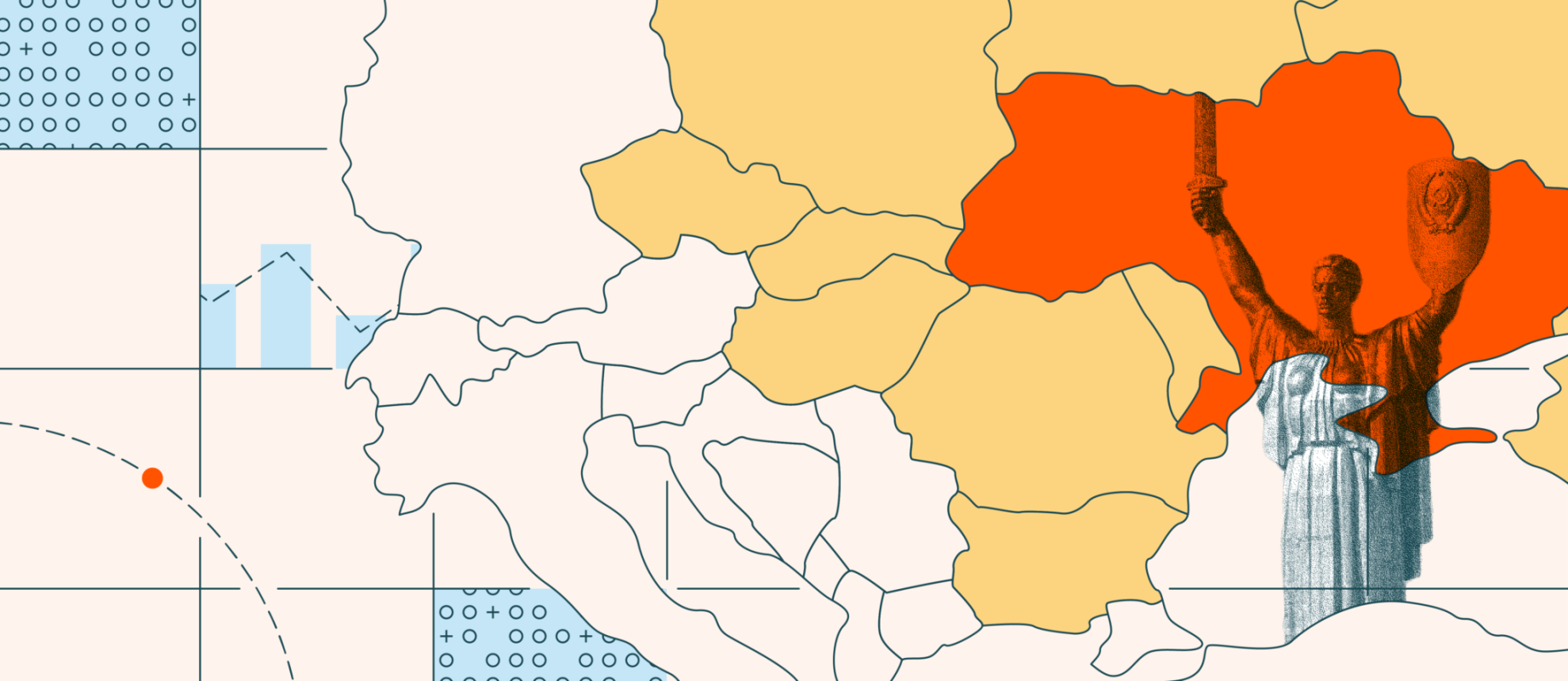Original author: Chainalysis
Original compilation: Luffy, Foresight News

This article is excerpted from Chainalysis’ 2023 Cryptocurrency Geography Report, which will be released later this month.
Eastern Europe is the fourth largest cryptocurrency market we studied, with $445 billion worth of cryptocurrencies accepted on-chain in the region between July 2022 and June 2023, accounting for 8.9% of global trading activity during the study period.


Cryptocurrency usage has declined in most regions of the world over the past year, and Eastern Europe is no exception. Transaction volumes in the region fell by 22%, in line with the global downward trend over the same period. While economies elsewhere are showing signs of recovery from the crypto winter, Eastern Europe is still reeling from the economic fallout from the Russia-Ukraine war, which we will discuss in more detail later. Both countries are the largest cryptocurrency players in the region, both in terms of transaction value and mass adoption.

The majority of trading volume in Eastern Europe is comprised of institutional-scale transfers, while the region’s centralized exchanges and DeFi protocols are relatively evenly distributed in terms of on-chain trading volume.


However, when we segment Eastern Europe’s cryptocurrency activity by transaction size over time, interesting trends emerge. Despite three spikes during the study period, large institutional trading volumes have been steadily declining. On the other hand, smaller institutional trading volumes have remained relatively stable despite a period of volatility, while professional-sized trading volumes are higher than both. Retail trading volumes also remained stable. All in all, the data shows that while the region’s top cryptocurrency users reduced their activity during the bear market, the remainder continued to participate in the asset class.

As we have seen in other regions, the biggest swings in cryptocurrency activity in Eastern Europe coincide with market-shaking events, such as the collapse of FTX in late 2022 and the closure of Silicon Valley Bank (SVB), Silvergate Bank, and Signature Bank in March. Transfer size data shows that institutional investors have seen the biggest change in behavior during this period.
One notable positive trend in the region is DeFi. Eastern Europe was one of only three regions to see growth in DeFi activity (up 3%).

The reasons for this rise are complex, but uncertainty over regional regulations and cryptocurrency market turbulence may be contributing factors. In the past, we have observed that when centralized exchanges experience problems or market crises, investors turn to DeFi, possibly because the non-custodial nature of DeFi gives users greater control over their funds.
Cryptocurrency adoption remains steady even as prices drop
Ukraine and Russia are often the mainstays on the world stage when it comes to cryptocurrency adoption. Although they remain the region’s leaders in terms of transaction volume and mass adoption, Ukraine and Russia also experienced the largest year-over-year declines in cryptocurrency trading volume among Eastern European countries, at $35.8 billion and $41 billion respectively. Mass adoption has also declined compared to other countries, with Ukraine and Russia falling two and four places respectively in our Global Cryptocurrency Adoption Index.

This decline may be driven by the ongoing war between the two countries. Russia’s decline may be partly attributed to U.S. economic sanctions, the European Commission’s sweeping crypto ban on Russia last fall, and a general decline in companies’ willingness to do business in Russia. One piece of evidence is that Russian usage on the worlds largest international exchanges has dropped by more than 50% since the months before the war, as we can see in the index below. This may be partly attributed to restrictions imposed by some international exchanges on Russian users and banks due to the war. At the same time, we have also seen an increase in trading volumes on exchanges that primarily serve Russia, where such restrictions have not been introduced.

While Russian trading volumes on international exchanges are still generally higher than on local exchanges, the opposite adoption trend suggests that at least some Russian users may be switching to local exchanges. But overall, we believe these restrictions are hurting the Russian market, and the same economic headwinds are affecting crypto users in other parts of the world.
In Ukraine, on the other hand, we believe that the decline in transaction volumes is more due to the extreme economic hardship caused by the war and the migration of many Ukrainian residents and businesses (including crypto platforms) to other parts of Europe.
Kuna is one of the Ukrainian cryptocurrency businesses that has been relocated due to the war. This year the company moved its headquarters to Lithuania and shifted its business focus to the European market. The company has several banking clients there and has developed Kuna Pay, a solution that provides B2B access to crypto payments. Kuna is also developing and obtaining the required licenses for staking products and creating a crypto custody solution that can be used by Ukrainian banks once regulations allow. Discussing these developments, Kuna Exchange chief legal counsel Anna Voievodina said, War makes us move forward faster.
She went on to say that the use of cryptocurrencies in Ukraine is complex. On February 17, 2022, the Ukrainian parliament passed cryptocurrency regulations, and the following week, Russia invaded the country. In the following months, while millions of cryptocurrency donations poured into Ukraine to support the fight against the aggression, a number of war-related interventions affected cryptocurrency usage. For example, the National Bank of Ukraine (NBU) banned the use of Ukrainian hryvnia to purchase cryptocurrencies in order to “prevent unproductive outflows of capital from the country” and save the national currency. Restrictions have since been eased, and Voievodina said Ukrainians have become more interested in cryptocurrencies and are understanding the opportunities.
Despite the damage the war has caused to Ukraine and its crypto ecosystem, some positives have emerged. The refugees are considered EU residents as the EU extends protection until March 3, 2025 for people fleeing war-torn areas. Taking advantage of these rights, many are adopting new behaviors, such as using crypto platforms that are subject to EU regulations, which are more advanced than those in Ukraine.
Voievodina said: Because Ukraines economy is in decline, towns are destroyed and people are leaving. Now, those Ukrainians who live under the European legal order are using financial instruments that they did not have before. People are looking for new options and are not No more fear of KYC like before.” She explained that these Ukrainians are now using cryptocurrencies for everyday purposes such as savings, donations and remittances. In fact, we estimate that remittances sent to Ukraine increased significantly last year. The chart below shows the growth in small-value transactions, which are comparable in size to payments typically used for remittances.

Data on the number of individual cryptocurrency transfers (rather than just transaction volume) also suggests that cryptocurrency usage remains consistent across Eastern Europe. Although transaction volumes in Eastern Europe have declined year-on-year, the number of transfers has remained consistent almost everywhere except Russia, with even increases in places such as Ukraine and Poland. This suggests that residents of these countries are still using cryptocurrencies at roughly the same pace.

Even in Russia, where the number of individual transfers fell, the decline was proportional to the decline in transaction volume, at 12.8% and 20.4% respectively. The above data shows that Eastern Europeans are still benefiting from cryptocurrencies and using it with a similar frequency as before, but are actually investing less money in cryptocurrencies.
As for future cryptocurrency growth in the region, Voievodina believes Ukrainians’ increasing integration with the EU will drive faster cryptocurrency adoption. She also discussed efforts to create a new bill that is compliant with MiCA (Crypto-Asset Market Regulation) and believes that regulation aimed at protecting the consumer market will be beneficial to Ukraine. “Governments recognize that without cryptocurrency regulation, they will be excluded from financial market opportunities.”
In Eastern Europe, People Still Use Cryptocurrencies
Despite the impact of the war, trends over the past year indicate that cryptocurrency adoption is still actively developing and growing in Eastern Europe. First, we see evidence that Russia has less access to international cryptocurrency platforms, which could impact its ability to continue funding the war. Next, the war led to faster integration of Ukrainians into the European Union, which recently passed its most comprehensive encryption legislation to date. Retail usage is growing despite the global market crisis, and the number of transfers has remained stable or increased in many countries where transaction volumes have declined, indicating that the technology is still providing value to users. DeFi usage has also increased across the region. When the impact of the Russia-Ukraine war subsides, we expect to see more crypto business returning to Ukraine, as well as continued developments in crypto regulation, both of which will continue to increase cryptocurrency adoption in Eastern Europe.



